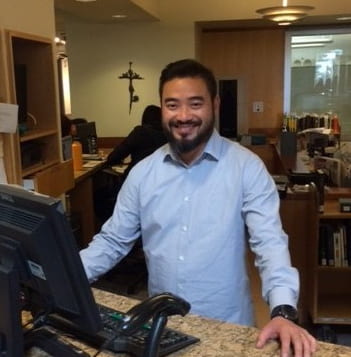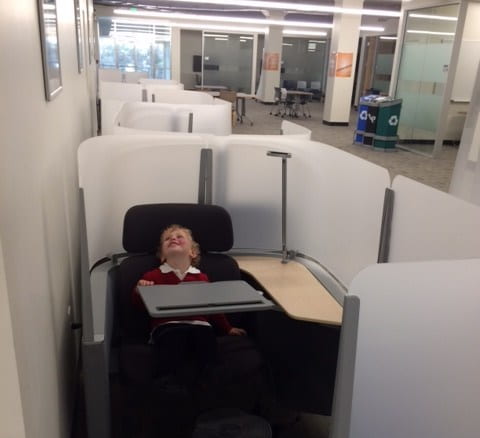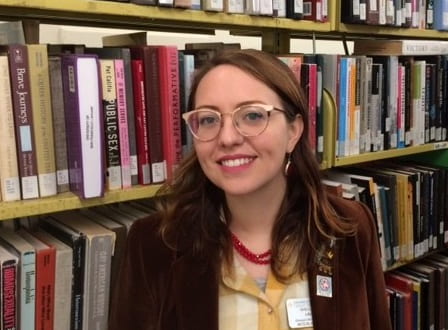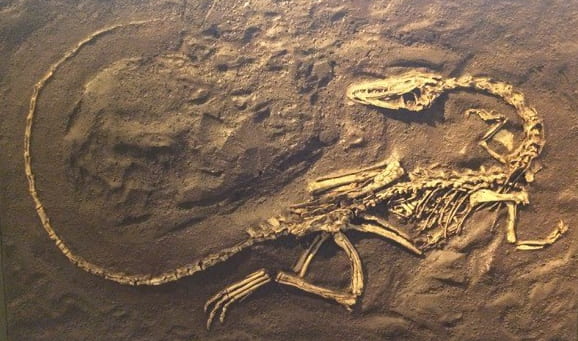Please welcome two of our most recent staff members! Billy Wong is taking on the role of Reserves Coordinator and Shelley Carr is our new Interlibrary Loan coordinator.
Billy Wong

Billy Wong has worked with USF for 18 years and we are excited to have him working with us at Gleeson. Billy has mastered several roles here at USF. Starting out with the Graduation Center, he later became a Degree Audit Coordinator, and then transferred over to Student Disability Services where he was the Assistive Technology Coordinator for 9 years. There he helped introduce students to alternative ways of completing coursework by using assistive technology. I asked Billy a few questions about himself and about Course Reserves, here are his insights.
What is one interesting fact about you that most people don’t expect when they meet you?
I have two daughters. A four-year-old who just started kindergarten and wants to be a veterinarian and animal walker when she grows up. The younger two-year-old is going to start pre-school. She’s yet to determine what she wants to be, although she might become a demolition worker, since she likes to destroy everything in sight.
What is your favorite place in the Library?
My favorite places are the study pods. I think it is awesome to be able to study and be as comfortable as being at home.

What is your role at Gleeson?
As the Course Reserves Coordinator, I help put course materials on Reserve for Faculty in order to provide access for students. I started in July and have learned a great amount within the short time. I look forward to working with the students, staff, and faculty that will be coming in.
How can faculty get the course reserve process started?
There are two ways to submit a request. If they come into the library there is a hard copy form that they can fill out. If they are not able to come in person they can access the online submission form through the Gleeson Library website. With each request, the information must be clear and accurate so that we can make sure that we have the right course material. The process can can take between 1-5 days. It all depends on where each request is in the queue.
How do students find reserves?
Students can find the reserves through the Gleeson Library webpage. If they know the material they are looking for, they can simply do a search and if it is part of the course reserve, the system will let them know.
Is there anything that Faculty should always keep in mind to get the most out of Reserves?
The most important thing to remember is to make sure that the requests are complete and all information is accurate, that pdfs are clear and legible, and that if there are any questions/concerns/adjustments to let me know as soon as possible. I am here to help the faculty the best way I can. wongb@usfca.edu
Shelley Carr

Shelley Carr says: “I was born and raised all over California.” She has a BFA (painting, design, and textiles) and a MA in curatorial practice (curating contemporary art) both from the California College of the Arts. She is in her final year of library school at San Jose State. She has worked in a variety of roles. “I’ve worked as a graphic designer, curator, worked in a jewelry store, researcher, program manager, pastry chef, proofreader, editor and barista over the years, but libraries are the best.” I asked Shelley a few questions about herself and Interlibrary Loan and this is what she had to say:
What is one interesting fact about you that most people don’t expect when they meet you?
I think the big one is that I LOVE natural history & biology! I love learning about marine biology (especially octopuses), aquatic animals, plants, botany, and fossils! It’s sort of my side hobby.

What were you doing before you joined the Gleeson Library team?
I was a program manager at the California Institute of Integral Studies (in Soma) managing their Anthropology & Social Change dept and the MFA departments (due to my experiences, they had me manage both). I also did some part time work at the San Francisco Opera Archive and SFMOMA Collections departments.
What is your favorite place in the Library?
I think the Monihan Atrium is the best place to read, sitting by the window, but the rare books room is also really cool! There is a really great woodcut collection, as well as some original John Muir notebooks. I love going up there.
What is your role at Gleeson?
I am the Interlibrary Loan Coordinator in Access Services.
What is Interlibrary Loan?
Interlibrary loan is what it sounds like, borrowing books from other libraries. Interlibrary loan allows students, faculty, and staff to borrow books and articles from other libraries who have them. It is often abbreviated as ILL.
That’s awesome! So if I wanted a book that wasn’t at the Library how would I ask for it?
So if the USF library doesn’t have a book you want, then first you want to see if we can borrow it through Link+, which is a consortium of California & Nevada Universities and public libraries, that loans books and DVDs fairly quickly and for free! Usually there is a link to the Link+ catalog from the search results page in the Library’s catalog Ignacio. Feel free to email ILL@usfca.edu with any questions.
If there isn’t a Link+ library who has it, then you can try an interlibrary loan request. These requests are made online through a web-portal called Illiad. You access this through the main library home page> services drop down > interlibrary loan > click the interlibrary loan banner at the top of the page.
How long does it take?
Link + usually takes just three business days. If we need to use traditional Interlibrary loan (ILL) borrowing books can take up to two weeks, it really depends on the lending institution. Articles are usually much faster, usually just a couple days sometimes as much as a week.
How do I request articles?
From within most of our databases, Interlibrary loan is an option in the full text finder. You can also request articles directly in Illiad. Login to Illiad, and select “article” when making a new request. Please enter as much information as possible, including journal title, journal volume and issue, year, author name, article name, and ISBN or Pubmed ID if available. That helps me find you the right article.
What about other types of materials can I get them too?
Link+ lends CDs, DVDs, VHS tapes (old school, I know), and books, sometimes video games. Interlibrary loan sends books, articles, and sometimes DVDs.
Is there anything that Faculty should always keep in mind to get the most out of Interlibrary Loan?
The best thing for faculty to keep in mind is that interlibrary loan sometimes has a cost, depending on the lending institution but we always try to get it for free first. Additionally, if you have a ISBN for the journal or book, or a PubMed ID for an article, please supply it! Some journals or books have very similar titles, and it can be difficult to source the right thing if I am working with an incomplete citation.
Thank you
